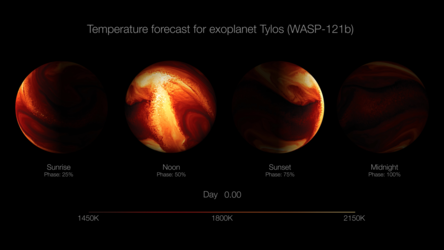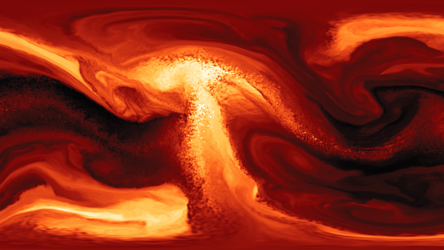

WASP-121 b (artist’s impression)
This is an artist’s impression of the exoplanet WASP-121 b, also known as Tylos. The exoplanet’s appearance is based on Hubble data of the object. Using Hubble observations, another team of scientists had previously reported the detection of heavy metals such as magnesium and iron escaping from the upper atmosphere of the ultra-hot Jupiter exoplanet; this marked the first example of such a detection. The exoplanet is orbiting dangerously close to its host star, roughly 2.6% of the distance between Earth and the Sun, placing it on the verge of being ripped apart by its host star's tidal forces. The powerful gravitational forces have altered the planet's shape.
An international team of astronomers assembled and reprocessed Hubble observations of the exoplanet made in the years 2016, 2018 and 2019. This provided them with a unique dataset that allowed them not only to analyse the atmosphere of WASP 121-b, but also to see how it changed over several years. They found clear evidence that the observations of WASP-121 b were varying in time. The team then used sophisticated modelling techniques to demonstrate that the changes they saw over time could be explained by weather patterns in the exoplanet's atmosphere.
[Image description: An artist impression depicting the exoplanet WASP 121-b. The planet dominates the foreground in the right side of the image, and appears banded with colours of red, yellow and orange. Behind the planet is a large star that appears similar in size to the exoplanet.]





